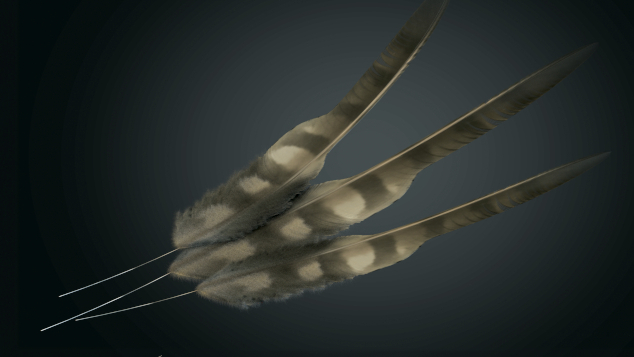www.canadianarchitect.com
The full modernization of Montreals city hall includes energy upgrades to 169 heritage double-height sash windows.PROJECT Montreal City Hall modernization, Montreal, QuebecARCHITECTS Beaupr Michaud et Associs, Architectes in collaboration with MU ArchitectureTEXT Peter SealyPHOTOS Raphal ThibodeauThe successful restoration of Montreals City Hall by Beaupr Michaud et Associs, Architectes in collaboration with MU Architecture and a team of ten other specialist firms presents not only an ecologically and aesthetically superb work of civic architecture, but also a welcome opportunity for reflection upon the meaning of public buildings and why they should be valued.When we speak of architecture as public, we are sometimes referring to buildings in government ownershipa category which would include spaces with little or no access, such as fire stations, prisons, schools, and wastewater treatment plants. In other cases, a buildings publicness is adjudged precisely because it can be entered by anyone, with limited restrictions, no matter who its owner may be. Fast food restaurants, shopping malls, and subway stations belong to this latter category. While libraries, museums, and recreation centres comfortably straddle these two definitions, major government buildings such as embassies and legislatures test architectures capacity to meaningfully welcome citizens in the face of onerous and ever-increasing security requirements. With Montreals City Hall (known as the Htel de ville in French), this dual challenge of creating a building that is open to citizens, and yet also functional for municipal governance, has been ably handled by the architects charged with revitalizing this century-old edifice.On the second level, the reopened Hall of Honour includes ornate marble walls, pilasters and floors.HistorySituated at the edge of the Old City between the Champ-de-Mars and Place-Jacques-Cartier, Montreals Htel de ville offers impressive vistas southwards towards the St. Lawrence River and northwards to Mount Royal. Constructed in 187278 to designs by Alexander Cowper Hutchison and Henri-Maurice Perrault, the Second-Empire-style Htel de ville was rebuilt following a devastating fire in 1922 and later expanded in the 1930s; major restoration works took place from 1990 to 92. Its best-known feature is forever ingrained in our history: the south-facing balcony from which the French President Charles de Gaulle delivered his famous Vive le Qubec Libre! speech to a rapturous crowd in July 1967.The early 2010s were a difficult period for Quebec politics, as fraught debates over religious symbols and reasonable accommodations were layered atop student strikes and municipal corruption scandalsespecially around the awarding of construction contractsresulting in a profound sense of public unease and distrust. Macleans magazine would later apologize for a controversial 2010 cover showing Bonhomme Carnival carrying a briefcase stuffed with cash, accompanied by the incendiary headline The Most Corrupt Province in Canada. It was against this background that restoration work on the Htel de villes copper roofs revealed the need for far larger interventions. In launching a wide-ranging revitalization of the Htel de ville in 2017, the City of Montreal set transparency as its order of the day, both spatially and financially.Spatially, this meant opening the building to make it more accessible and welcoming to visitors. While open doors and glass walls are no guarantee that malfeasance has been banished, such gestures were supported by first Mayor Denis Coderres and later Mayor Valrie Plantes administrations, under whose aegis the project was executed. As a result, the areas accessible to all members of the public have been more than doubled, including a vastly enlarged reception lobby, public caf, and planned exhibition space.Public areas on the ground floor include a significantly enlarged reception lobby.While far from idealthe presence of a metal detector, x-ray machine, and several security guards hardly screams bienvenue!this necessary compromise marks the point of departure for a laudable and stunning sequence of public spaces spanning two floors. From the large ground-floor vestibule, upstairs to the massive and ornate Hall of Honour and council chamber, visitors may wander and appreciate a restoration which appears imperceptible. Thanks to painstaking work, marble, brass, wood, and ironwork appear as they might have a century ago, when the building was freshly made: thousands of hours of intellectual and physical labour have been expended to make it appear as if nothing had changed, and nothing had been touched.This promenade patrimoniale concludes with the newly built Salle du pin blanc, a rooftop pavilion offering stunning views of the city and the Hotel de villes own faades. Clad in brass, the pavilion is a solid yet unobtrusive presence upon the historic building. Visitors who turn away from the vista are afforded a special treat: the chance to gaze upon the five historic stained-glass windows which adorn the council chambers exterior faade.A new rooftop pavilion, the Salle du pin blanc, includes indoor and outdoor public seating areas adjacent the council chamber.Financially, the imperative for transparency meant that throughout the project, agreements with over fifty sub-contractorsfrom heritage masons to plumbershad to be approved by separate votes of the city council. The resulting series of arrangements for this Integrated Design Process (IDP) was complex for the architects to supervise, but also led to closer-than-usual collaboration between the designers and sub-trades. Throughout, modern amenitiesbe they the cabling needed to broadcast council sessions, or updated ventilation to introduce fresh airare largely imperceptible and completely unobtrusive. The level of care and coordination from architects and tradespeople needed to bring about such a result deserves high praise.Conceived as an unobtrusive complement to the existing building, the brass-clad pavilion offers visitors panoramic views of the city.As the project unfolded, two principal veins of work emerged. At one scale, the overall restoration involved the removal of a centurys worth of accreted partitions and wall coveringseach of which detracted from the grandeur and vision of the original Htel de ville. This is clearly apparent in the transformation of the salon de la Francophonie, which leads to the Balcon du discours from which De Gaulle made his provocatively emancipatory proclamation. The meanness of what was previously a dim series of small rooms has given way to a generous and well-lit salon leading to the balcony: here, restoration is a matter of subtraction.This was far from the only moment in which restoration uncovered elements of the original Htel de ville, which had been hidden behind decades of previous interventions. For example, on the ground floor, the original north faade, obscured during the construction of an addition to the rear of the building in the 1930s, has now been revealed. Heavy greystone blocks together with patches of brick and mortar are now visible from the Salle des armories on one side and the city clerks office on the other. Five openings in this long-hidden faade are adorned with a series of tableaux by the artist Chih-Chien Wang, which echo historic stained-glass windows in the city council chamber immediately above.At a finer-grained scale, the team laboured to reuse, recycle, and refurbish existing finishes and furnishings. The most impressive act of reuse is found in the restoration of the Htel de villes 169 double-height sash windows, which date from 1925. Framed in white oak, these windows had previously been blighted by poor energy performance and pierced by an unsightly array of air conditioners. The process of retrofitting began with the meticulous testing of two mock-ups. Even after careful analysis proved that the proposed window retrofit would be effective, it took a leap of faith from the municipal client to accept that this would be possible for such a huge number of windows. The result has been an immense success, with the buildings energy use reduced by 79 percent. By undertaking this process, the city leads by example, retaining heritage elements in the same way it often requires of homeowners undertaking renovations. The resulting effect is magnificent.The buildings office areas have been revitalized with a priority on creating open meeting and working areas, and the introduction of abundant daylight throughout the floorplate.Out of sight of most visitors, the Htel de ville includes significant office space for Montreals elected officials, including the mayor, along with their staff and municipal employees. This is executed brilliantly, replacing dark and cramped office areas with well-lit and apportioned spaces. The careful use of fritted glass partitions allows daylight to penetrate into interior spaces, which are arranged between the external faades and a core of white-oak-clad meeting rooms and service spaces.Two features jump out in the office areas: first of all, the emphasis on biophilic design, realized through an impressive quantity of plants arranged throughout. Secondly is the care with which mechanical services have been integrated into the buildings various spaces. One glance at the ceiling reveals the thoughtful arrangement of radiant heating panels, luminaires, and mechanical services. Once again, architecture is revealed to beat least in parta matter of coordinating labour to produce a seamless effect.The city council chambers stained glass windows and woodwork have been meticulously restored.Many of Canadas most significant representational buildings are either currently under restoration (the Parliament buildings in Ottawa) or in dire need of it (the Prime Ministers official residence at 24 Sussex Drive). At a moment of financial stress, which overlaps with paralleland somewhat relatedanxieties about political polarization and our ability to complete large-scale public works, such projects necessarily attract scrutiny, and often scare governments away from investing the needed funds to maintain our national heritage. The success of Beaupr Michaud and MUs transformation of Montreals Htel de ville suggests a way out: project by project, contract by contract, window by window, if needs be.The question remains to what extent the citizens of Montreal will adopt their Htel de ville as a properly civic space. What is clear is that this civic symbol has been revitalized in an exemplary manner. Whatever Montrealers think of their elected officials, they can be justifiably proud of their city hall.Architectural historian Peter Sealy is an Assistant Professor at the Daniels Faculty of Architecture, Landscape, and Design at the University of Toronto.CLIENT Ville de Montral | ARCHITECT TEAM Beaupr Michaud et Associs: Menaud Lapointe (MRAIC), Nelly Charpentier, Patrick Ma, Nicolas Gautier, Sabrina Richardson, Camille Charest, Maxime Bonesso, Catherine Lamarre, Martin Turenne, Parisa Roosta, Baptiste Aitken, tienne Miloux. MU Architecture: Charles Ct, Michelle Blair, Vronick Lalonde, Sakiko Watatani, Maud Benech | STRUCTURAL NCK inc. | MECHANICAL/ELECTRICAL Martin Roy et Associs | INTERIORS Beaupr Michaud et Associs, Architectes in collaboration with MU Architecture | CONSTRUCTION MANAGER Pomerleau | DECONTAMINATION Le Groupe Gesfor | ACOUSTICS Soft dB | A/V Go Multimdia | LIGHTING CS Design | FURNISHINGS David Gour | VERTICAL TRANSPORTATION JMCI | AREA 27,700 m2 | BUDGET $221 M | COMPLETION June 2024ENERGY USE INTENSITY (PROJECTED) 98 kWh/m2/year | WATER USE INTENSITY (PROJECTED) 0.11 m3/m2/year As appeared in theApril 2025issue of Canadian Architect magazineThe post Public Good: Montreal City Hall modernization, Montreal, Quebec appeared first on Canadian Architect.












